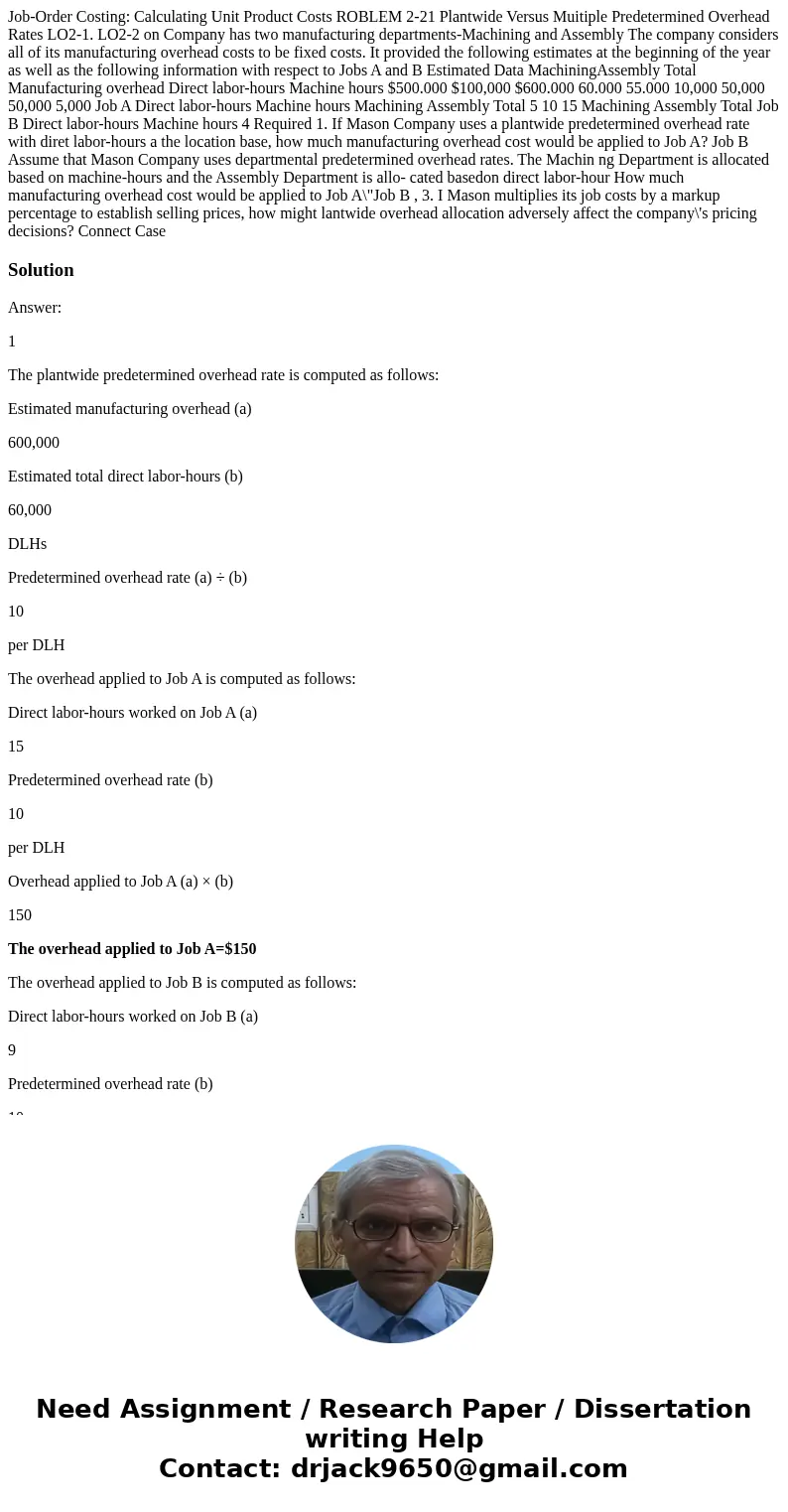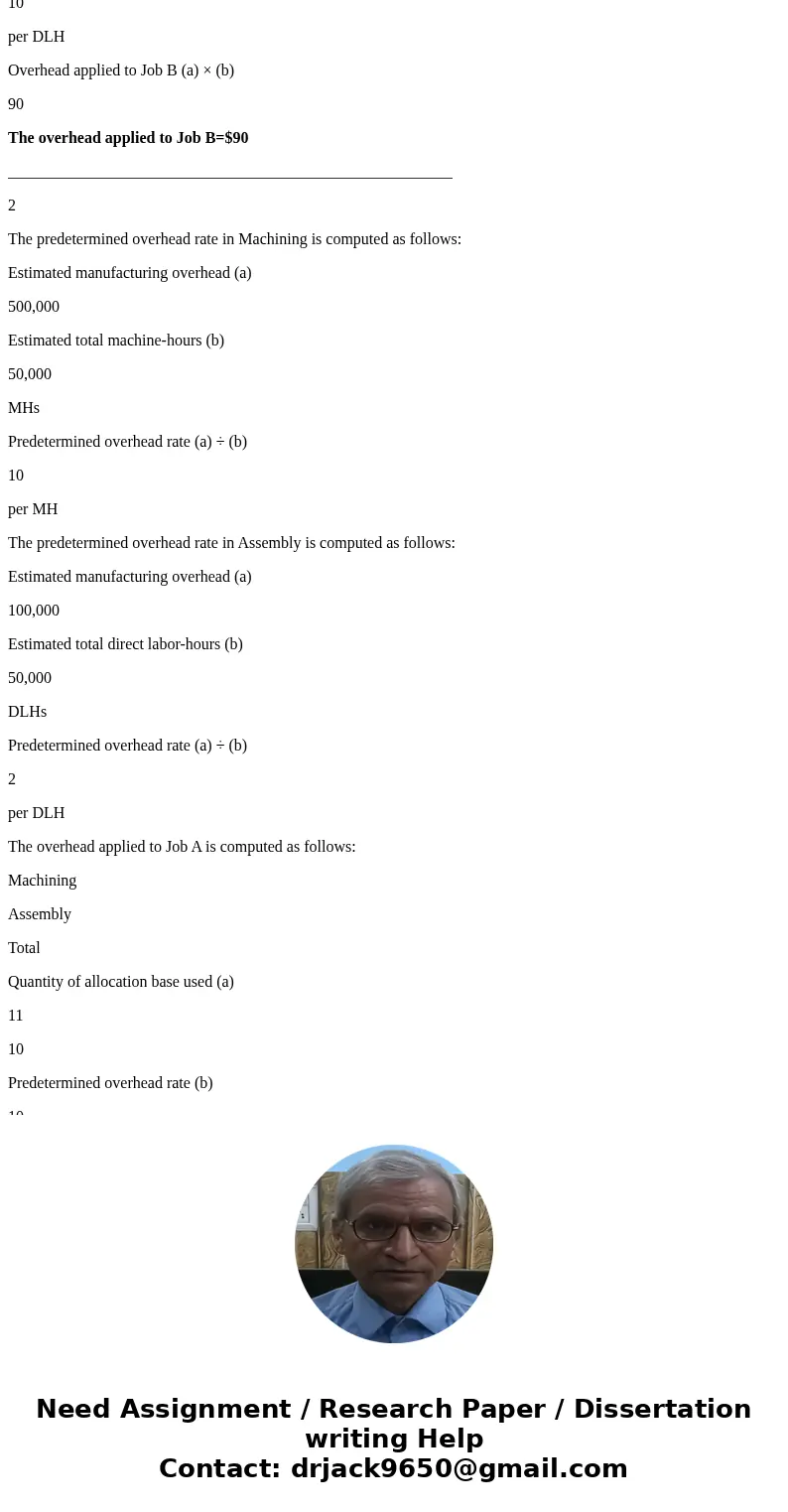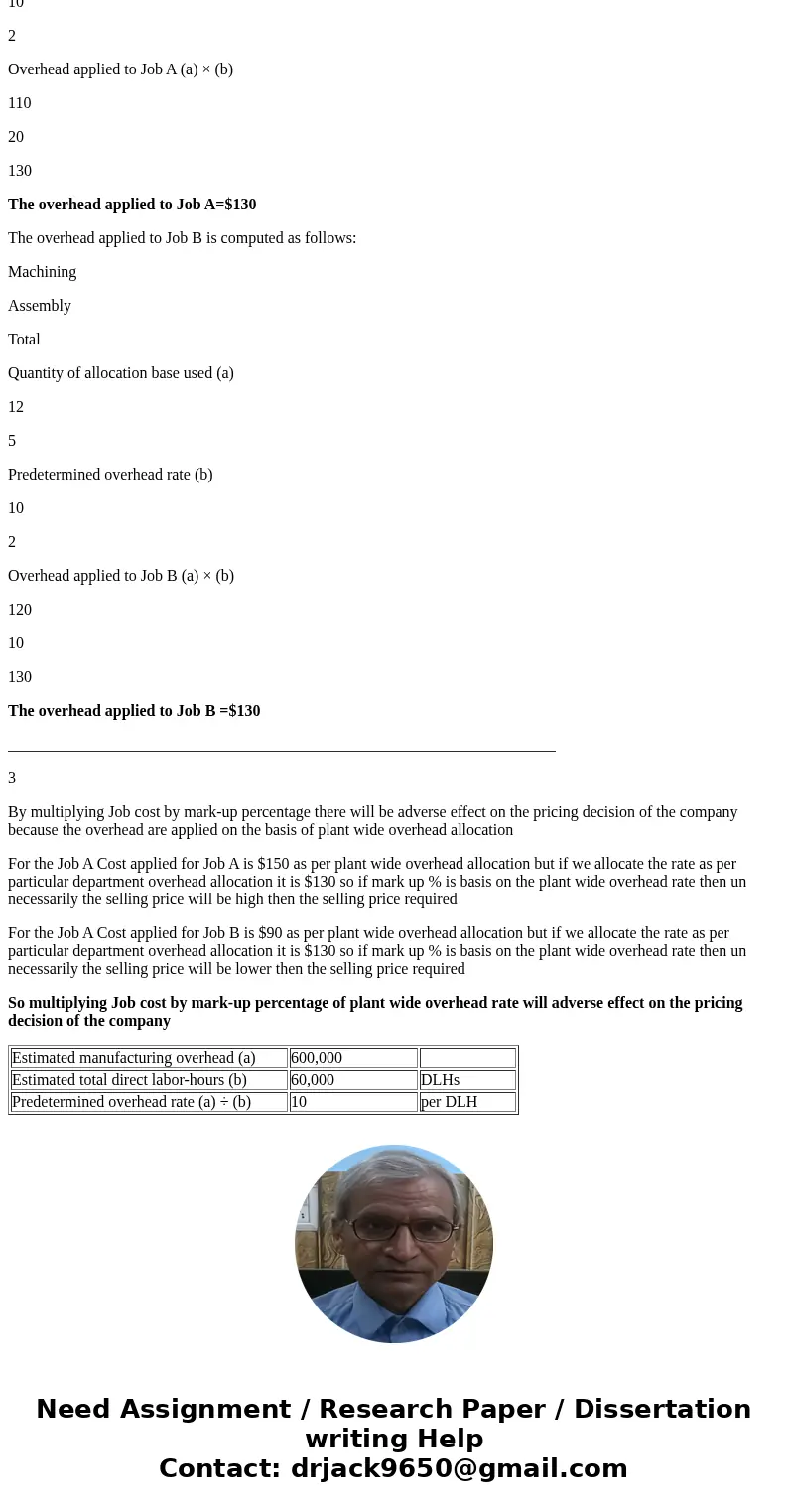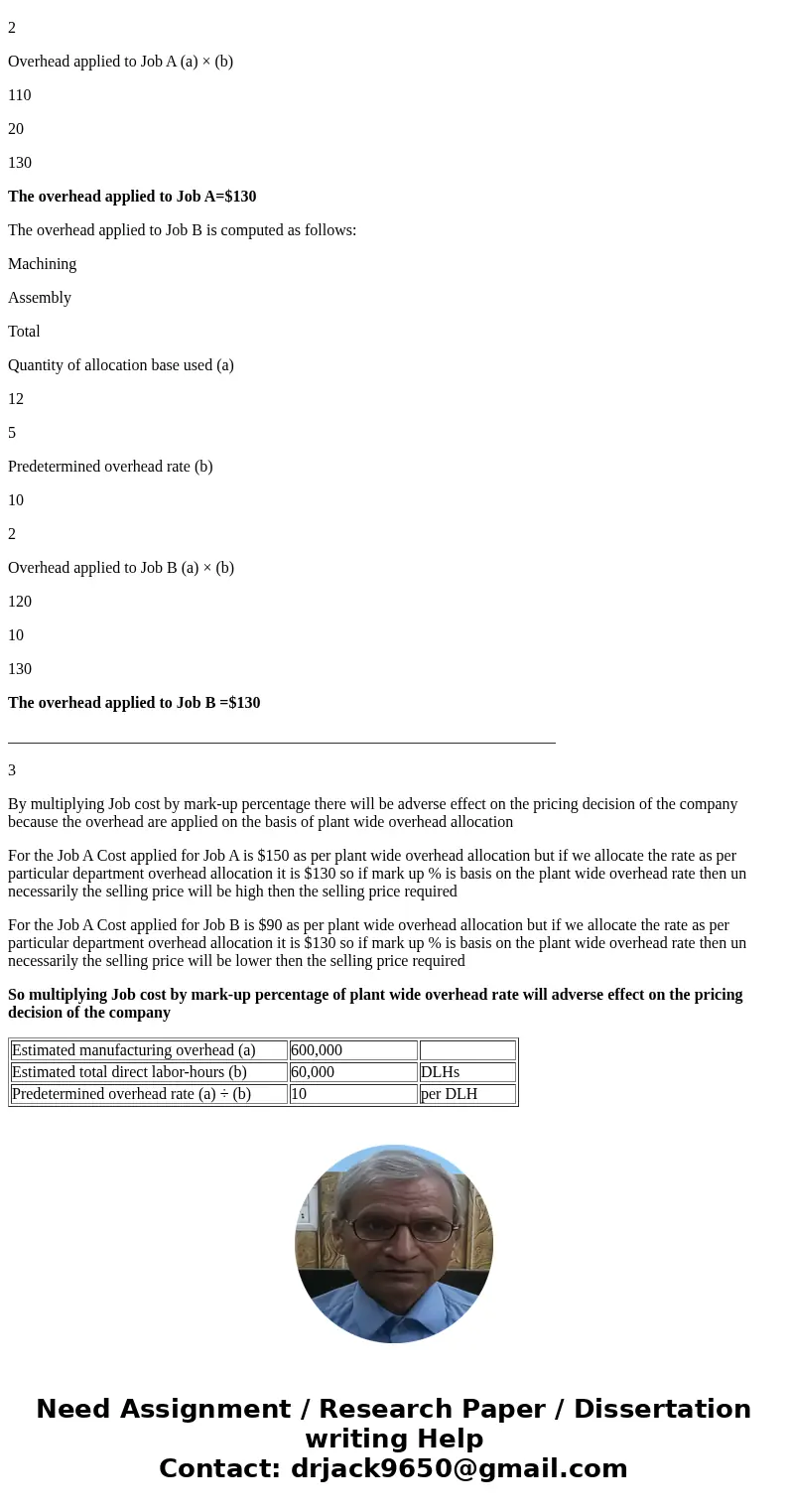JobOrder Costing Calculating Unit Product Costs ROBLEM 221 P
Solution
Answer:
1
The plantwide predetermined overhead rate is computed as follows:
Estimated manufacturing overhead (a)
600,000
Estimated total direct labor-hours (b)
60,000
DLHs
Predetermined overhead rate (a) ÷ (b)
10
per DLH
The overhead applied to Job A is computed as follows:
Direct labor-hours worked on Job A (a)
15
Predetermined overhead rate (b)
10
per DLH
Overhead applied to Job A (a) × (b)
150
The overhead applied to Job A=$150
The overhead applied to Job B is computed as follows:
Direct labor-hours worked on Job B (a)
9
Predetermined overhead rate (b)
10
per DLH
Overhead applied to Job B (a) × (b)
90
The overhead applied to Job B=$90
________________________________________________________
2
The predetermined overhead rate in Machining is computed as follows:
Estimated manufacturing overhead (a)
500,000
Estimated total machine-hours (b)
50,000
MHs
Predetermined overhead rate (a) ÷ (b)
10
per MH
The predetermined overhead rate in Assembly is computed as follows:
Estimated manufacturing overhead (a)
100,000
Estimated total direct labor-hours (b)
50,000
DLHs
Predetermined overhead rate (a) ÷ (b)
2
per DLH
The overhead applied to Job A is computed as follows:
Machining
Assembly
Total
Quantity of allocation base used (a)
11
10
Predetermined overhead rate (b)
10
2
Overhead applied to Job A (a) × (b)
110
20
130
The overhead applied to Job A=$130
The overhead applied to Job B is computed as follows:
Machining
Assembly
Total
Quantity of allocation base used (a)
12
5
Predetermined overhead rate (b)
10
2
Overhead applied to Job B (a) × (b)
120
10
130
The overhead applied to Job B =$130
_____________________________________________________________________
3
By multiplying Job cost by mark-up percentage there will be adverse effect on the pricing decision of the company because the overhead are applied on the basis of plant wide overhead allocation
For the Job A Cost applied for Job A is $150 as per plant wide overhead allocation but if we allocate the rate as per particular department overhead allocation it is $130 so if mark up % is basis on the plant wide overhead rate then un necessarily the selling price will be high then the selling price required
For the Job A Cost applied for Job B is $90 as per plant wide overhead allocation but if we allocate the rate as per particular department overhead allocation it is $130 so if mark up % is basis on the plant wide overhead rate then un necessarily the selling price will be lower then the selling price required
So multiplying Job cost by mark-up percentage of plant wide overhead rate will adverse effect on the pricing decision of the company
| Estimated manufacturing overhead (a) | 600,000 | |
| Estimated total direct labor-hours (b) | 60,000 | DLHs |
| Predetermined overhead rate (a) ÷ (b) | 10 | per DLH |




 Homework Sourse
Homework Sourse